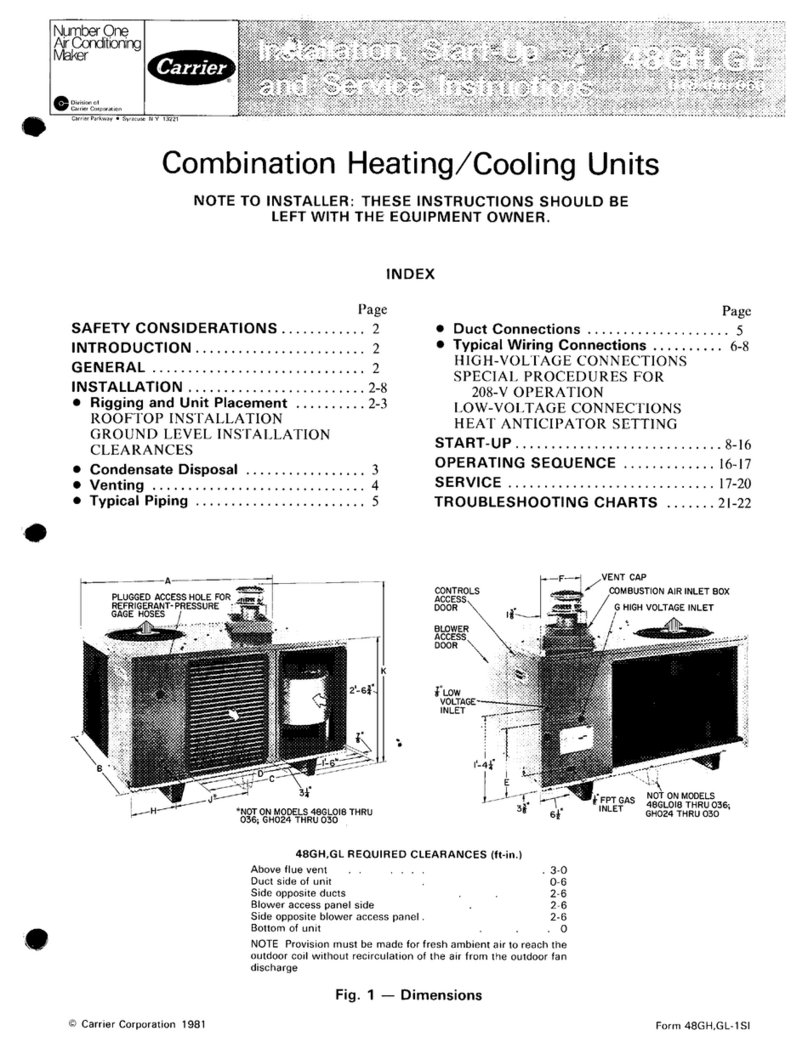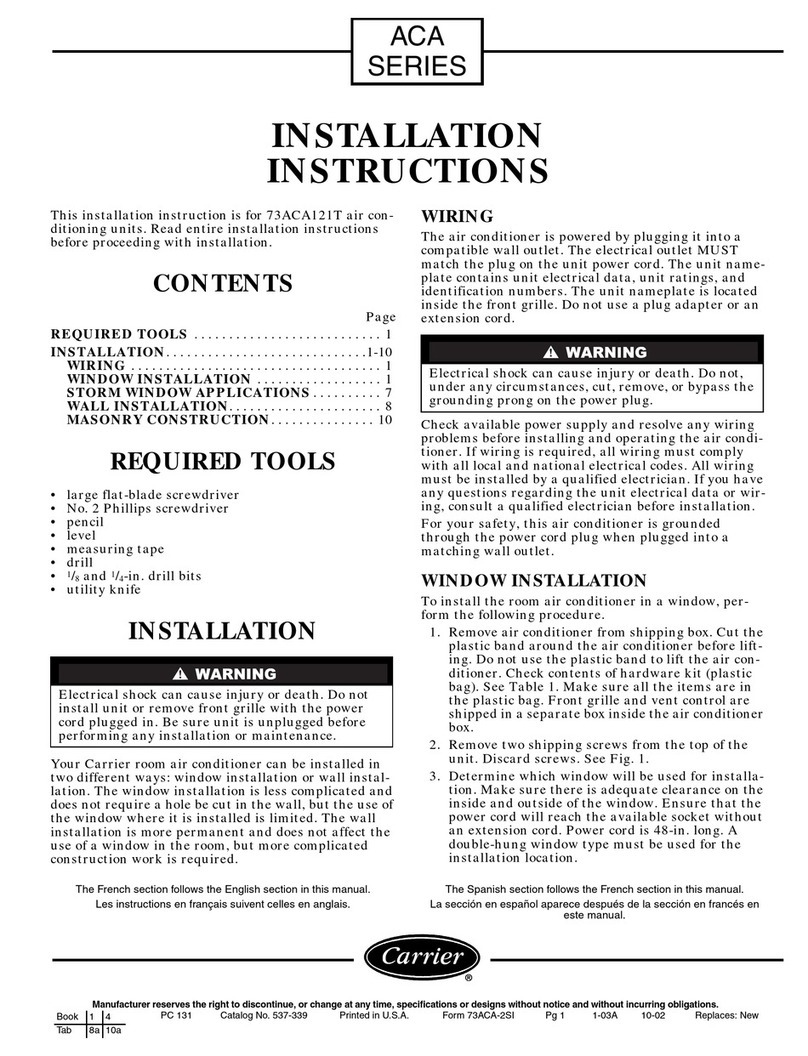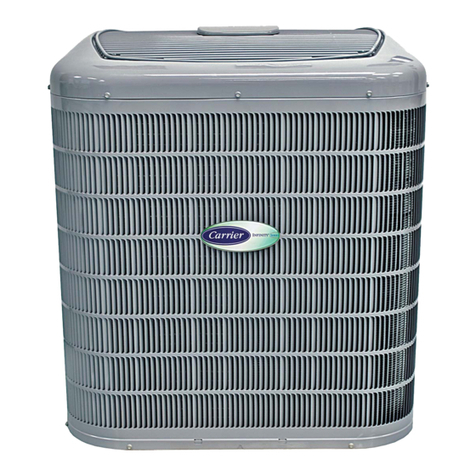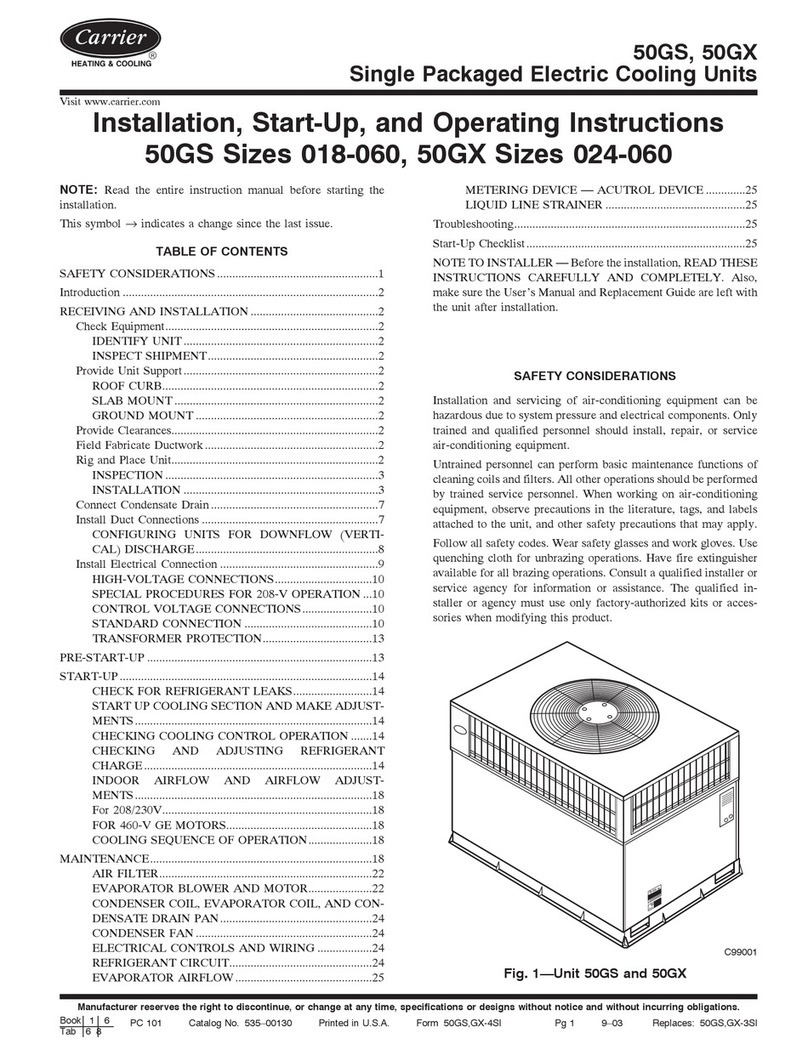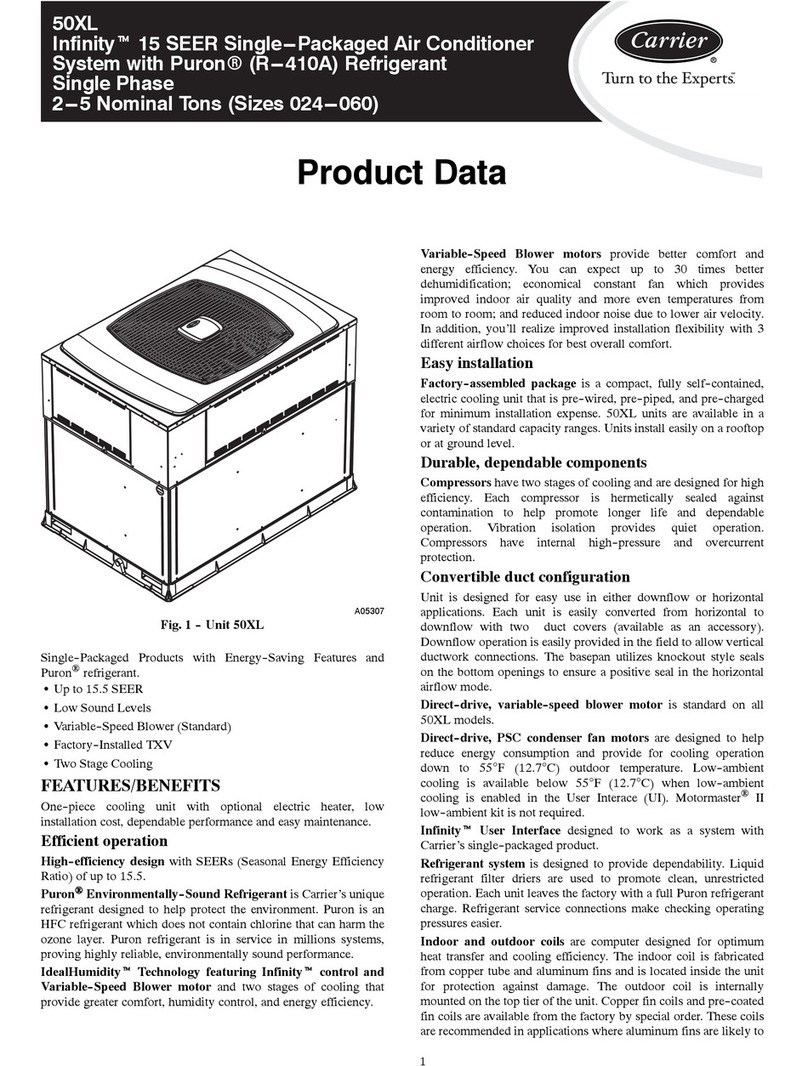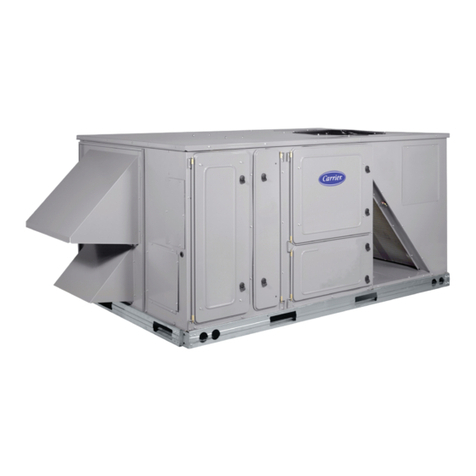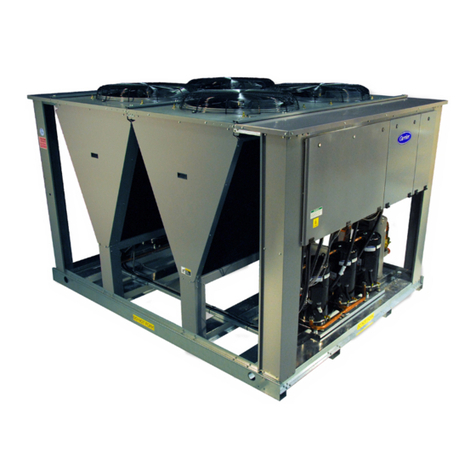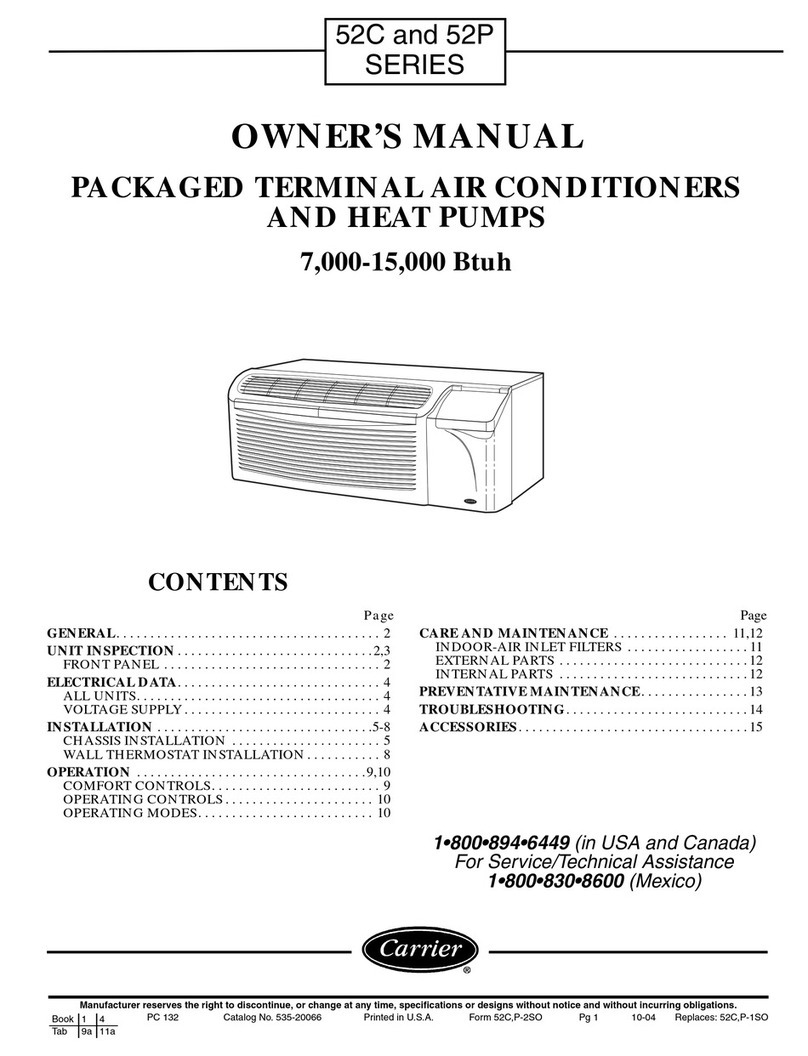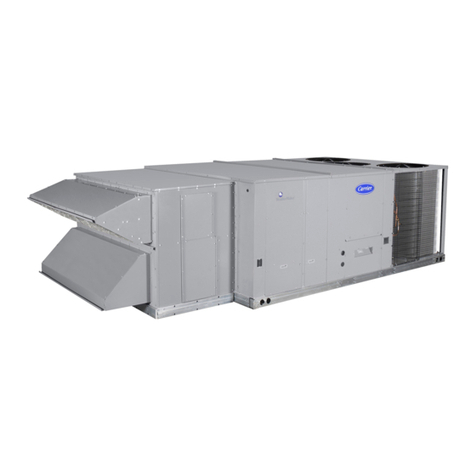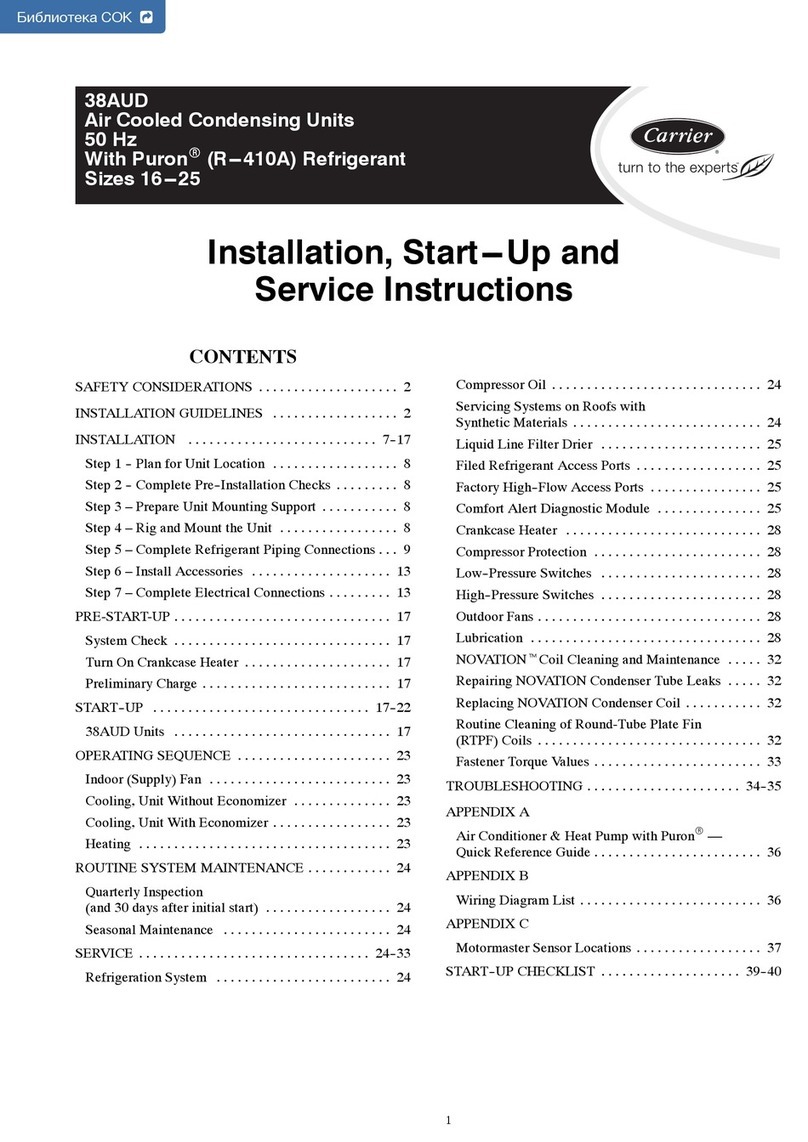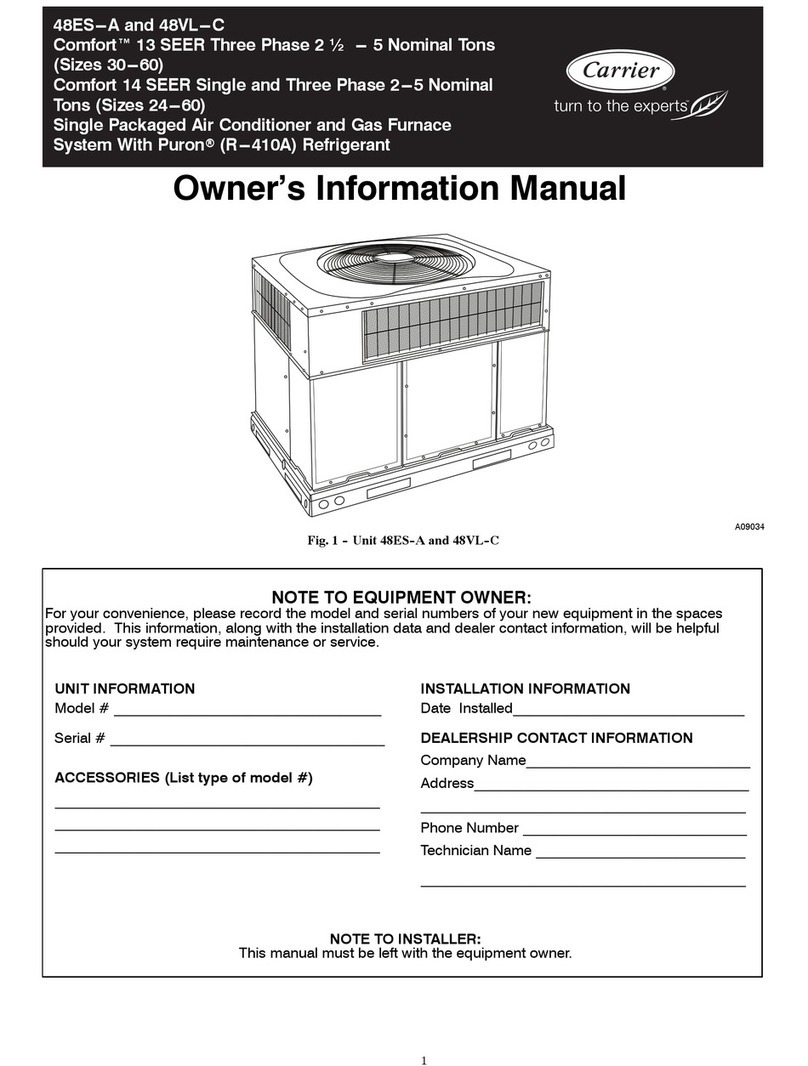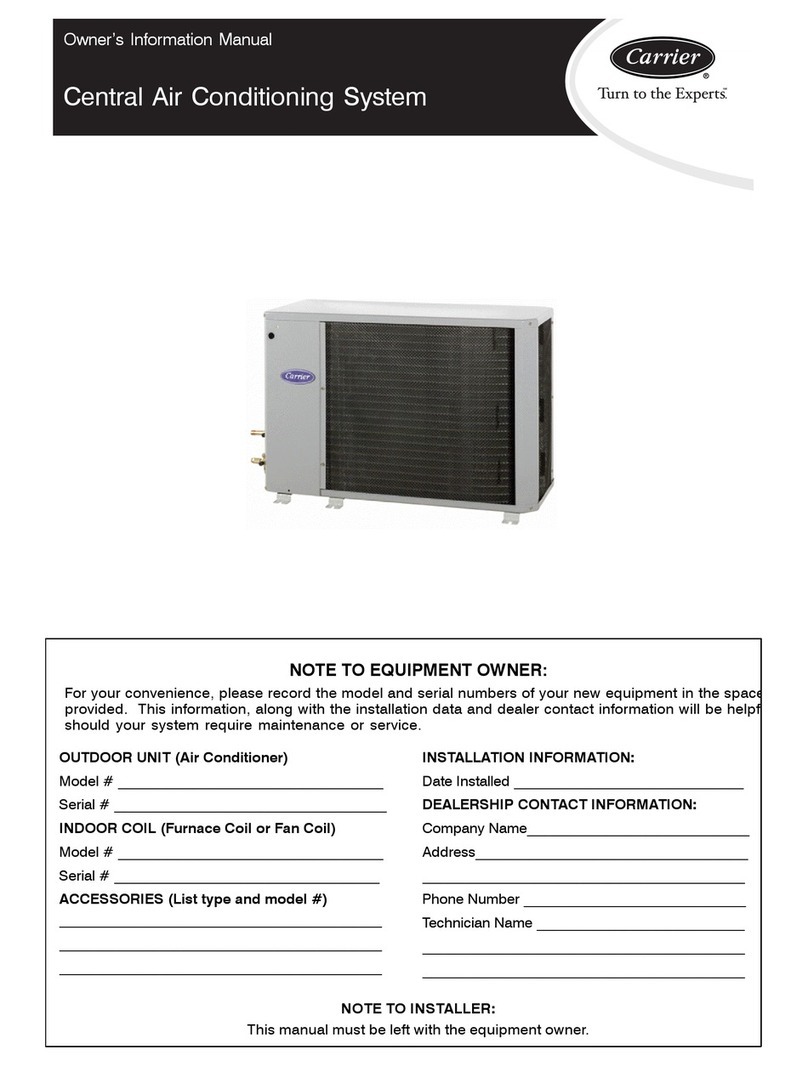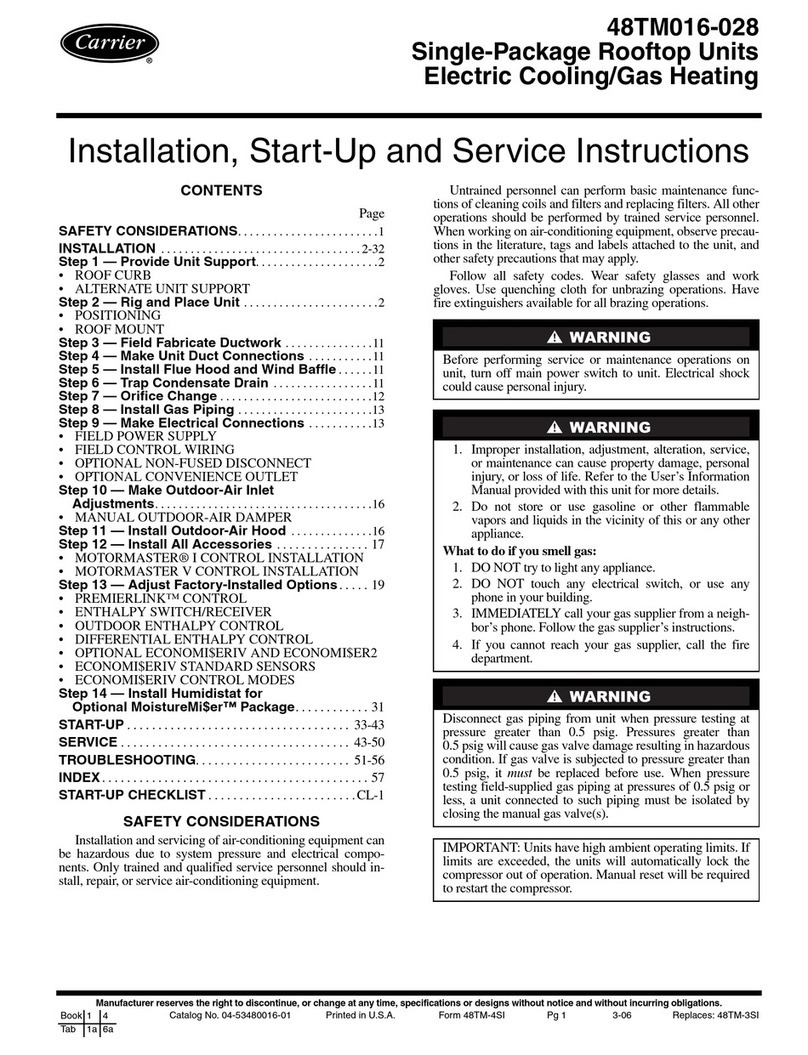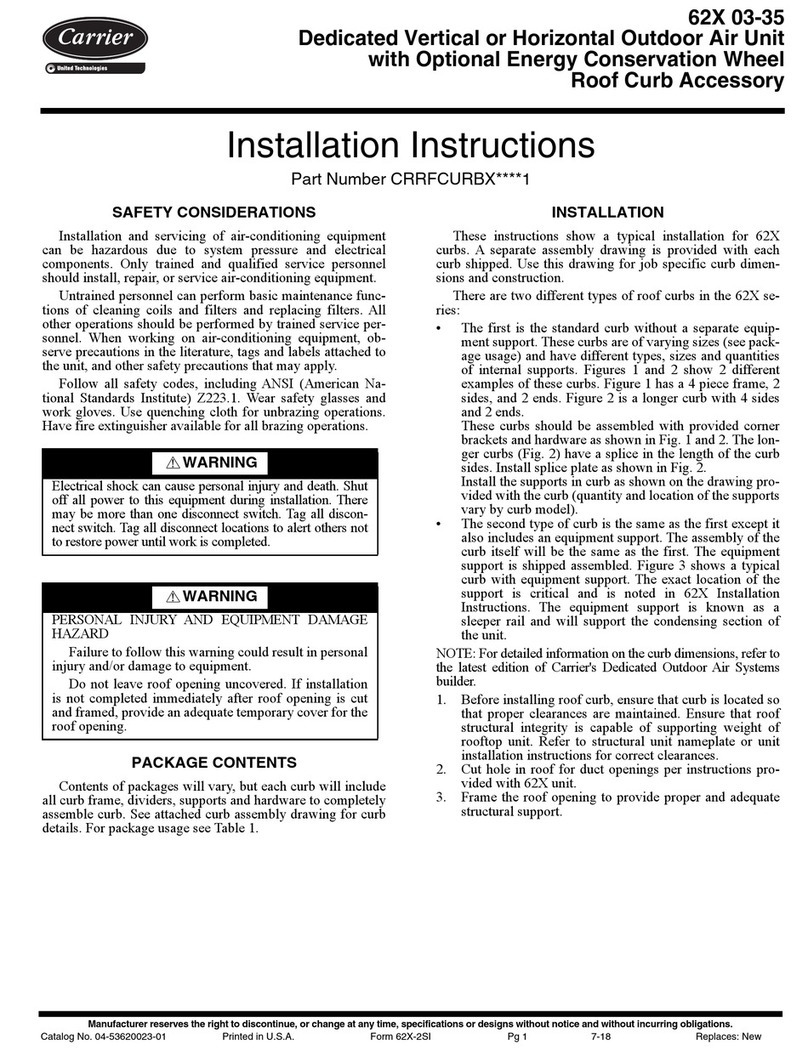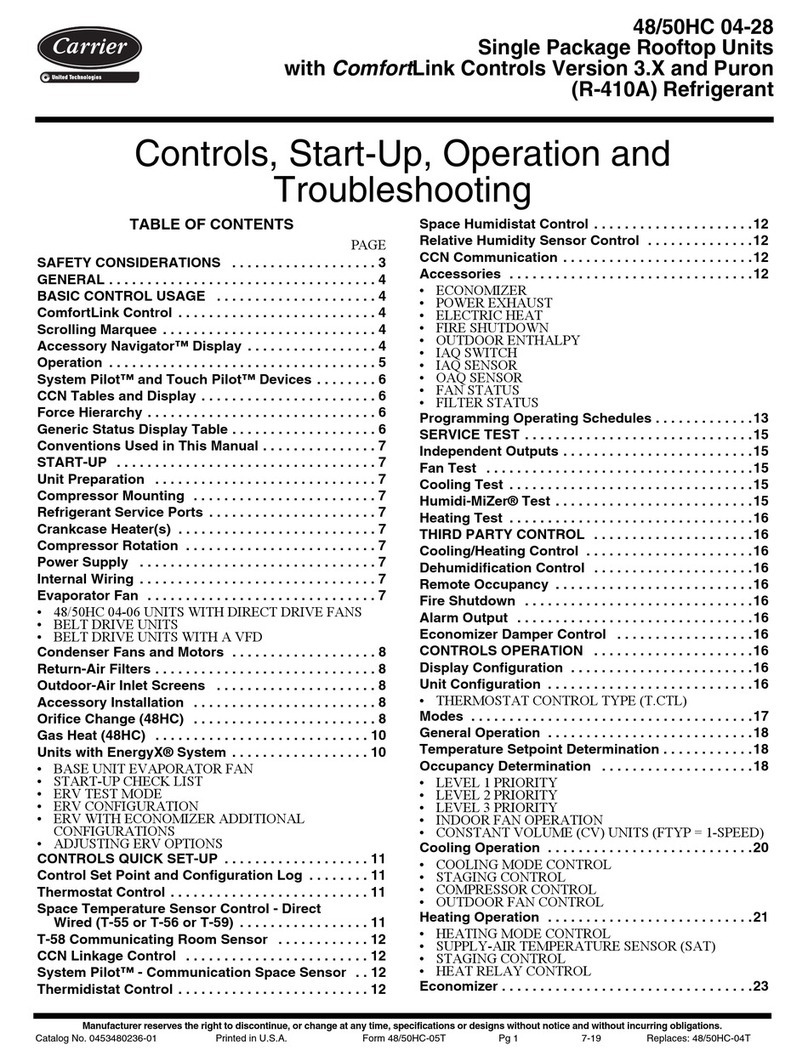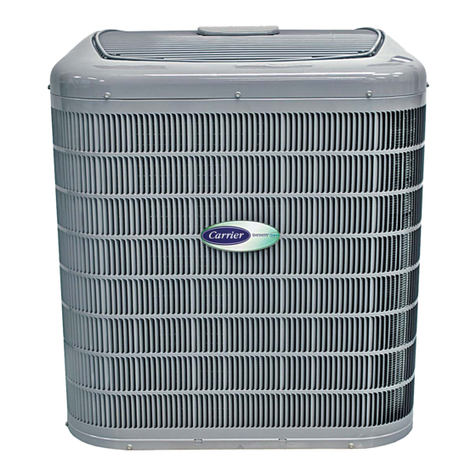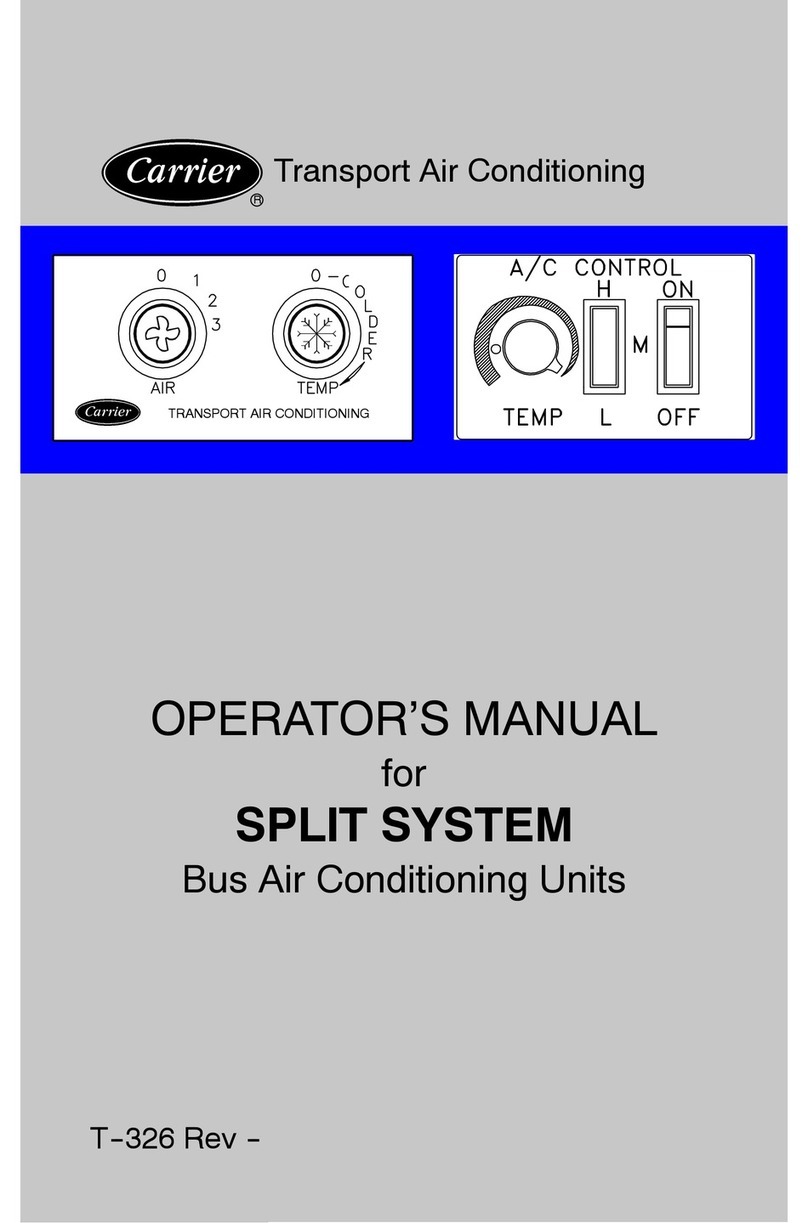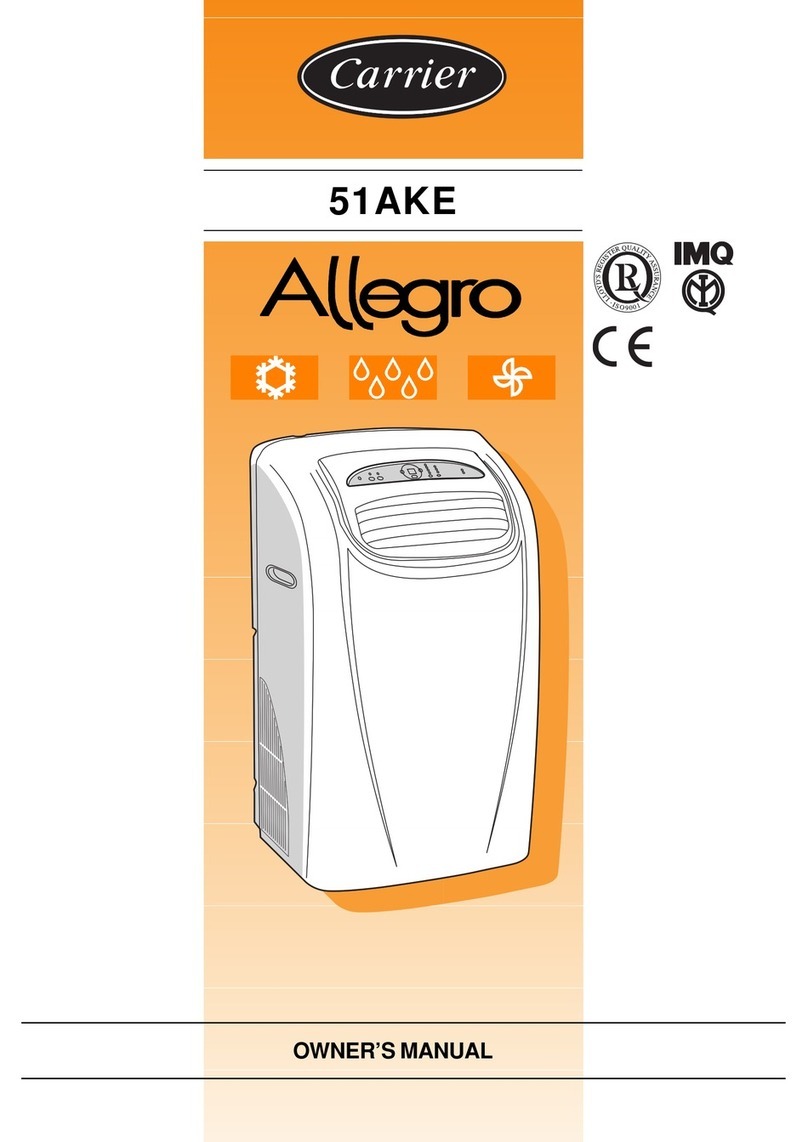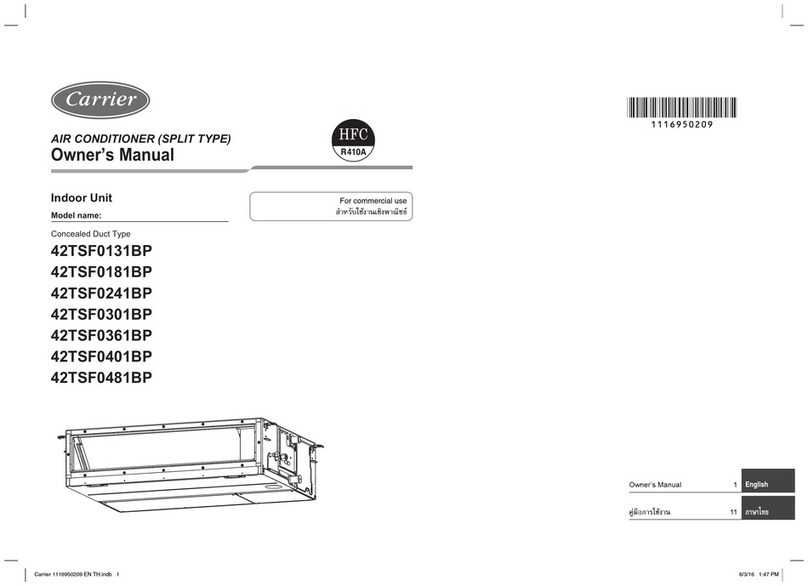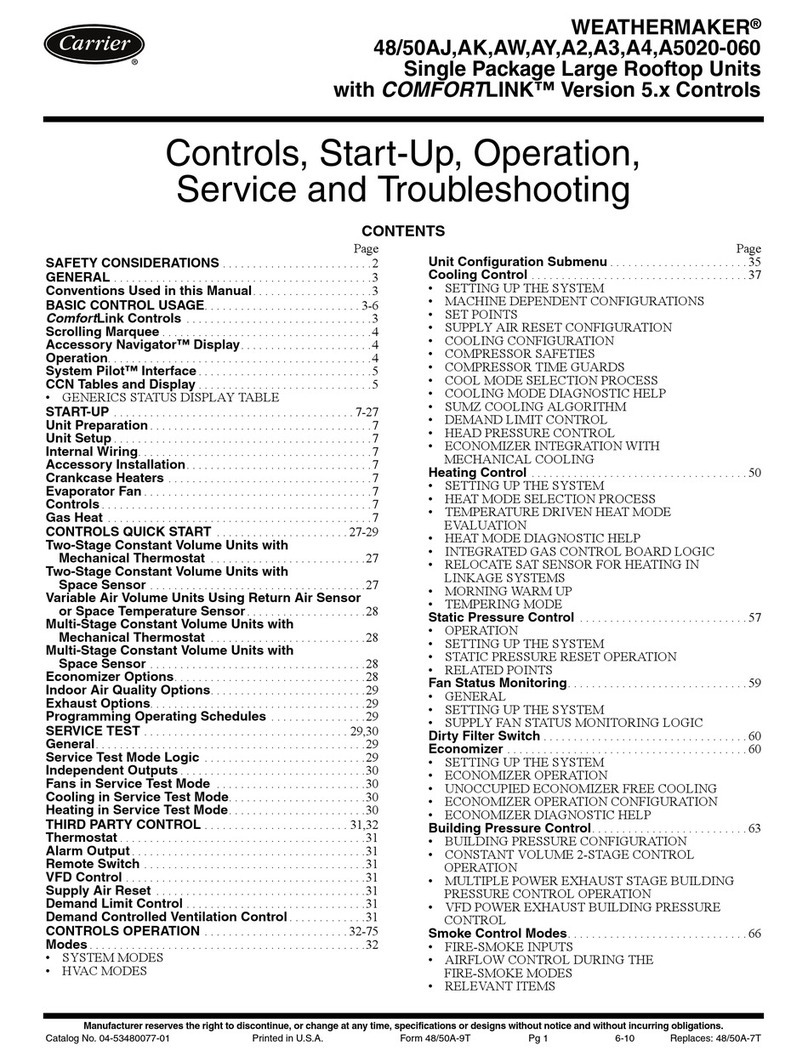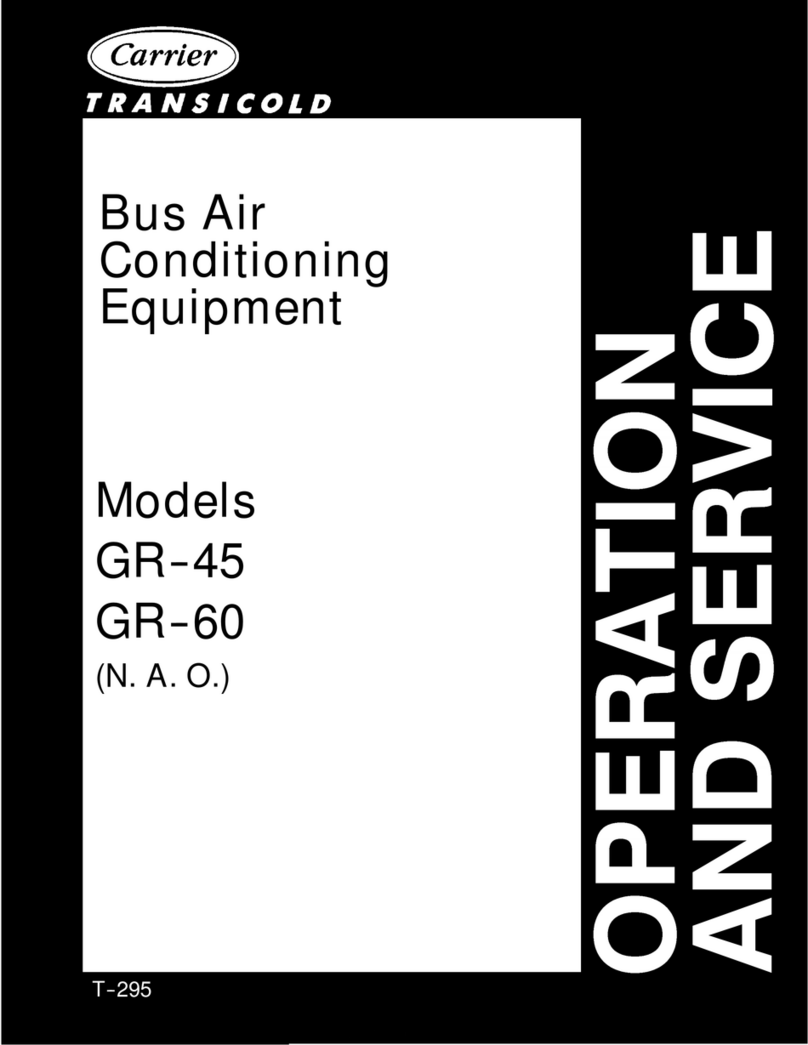
1
50PG08---16
Single Package Rooftop units
Electric Cooling with PURONR(R---410A) Refrigerant
and Electromechanical Controls
Installation Instructions
TABLE OF CONTENTS
SAFETY CONSIDERATIONS 1........................
INSTALLATION 2...................................
Step 1 -- Plan for Unit Location 2.....................
Step 2 -- Provide Unit Support 2......................
Step 3 -- Rig and Place Unit 2........................
Step 4 -- Field Fabricate Ductwork 11..................
Step 5 -- Make Unit Duct Connections 11...............
Step 6 -- Install External Trap for Condensate Drain 11.....
Step 7 -- Make Electrical Connections 12................
Step 8 -- Optional EconoMi$er IV 29..................
Step 9 -- Install All Accessories 36.....................
PRE--START--UP 37..................................
START--UP 37.......................................
SERVICE 47........................................
TROUBLESHOOTING 55.............................
UNIT START--UP CHECKLIST 58......................
SAFETY CONSIDERATIONS
Installation and servicing of air-conditioning equipment can be
hazardous due to system pressure and electrical components.
Only trained and qualified service personnel should install, repair,
or service air-conditioning equipment.
Untrained personnel can perform the basic maintenance functions
of cleaning coils and filters and replacing filters. All other
operations should be performed by trained service personnel.
When working on air-conditioning equipment, observe
precautions in the literature, tags and labels attached to the unit,
and other safety precautions that may apply.
Follow all safety codes. Wear safety glasses and work gloves.
Recognize safety information. This is the safety--alert symbol
. When you see this symbol on the unit and in instructions or
manuals, be alert to the potential for personal injury.
Understand the signal words DANGER, WARNING, and
CAUTION. These words are used with the safety--alert symbol.
DANGER identifies the most serious hazards which will result in
severe personal injury or death. WARNING signifies a hazard
which could result in personal injury or death. CAUTION is used
to identify unsafe practices which may result in minor personal
injury or product and property damage. NOTE is used to
highlight suggestions which will result in enhanced installation,
reliability, or operation.
ELECTRICAL SHOCK HAZARD
Failure to follow this warning could cause personal
injury or death.
Before performing service or maintenance operations
on unit, turn off main power switch to unit and install
lockout tag. Ensure electrical service to rooftop unit
agrees with voltage and amperage listed on the unit
rating plate.
!WARNING
UNIT OPERATION AND SAFETY HAZARD
Failure to follow this warning could cause personal
injury, death and/or equipment damage.
Puron (R--410a) refrigerant systems operate at higher
pressures than standard R--22 systems. Do not use R--22
service equipment or components on Puron refrigerant
equipment.
!WARNING
FIRE, EXPLOSION HAZARD
Failure to follow this warning could result in personal
injury, death and/or property damage.
1. Improper installation, adjustment, alteration, service,
or maintenance can cause property damage, personal
injury, or loss of life. Refer to the User’s Information
Manual provided with this unit for more details.
2. Do not store or use gasoline or other flammable
vapors and liquids in the vicinity of this or any other
appliance.
!WARNING
